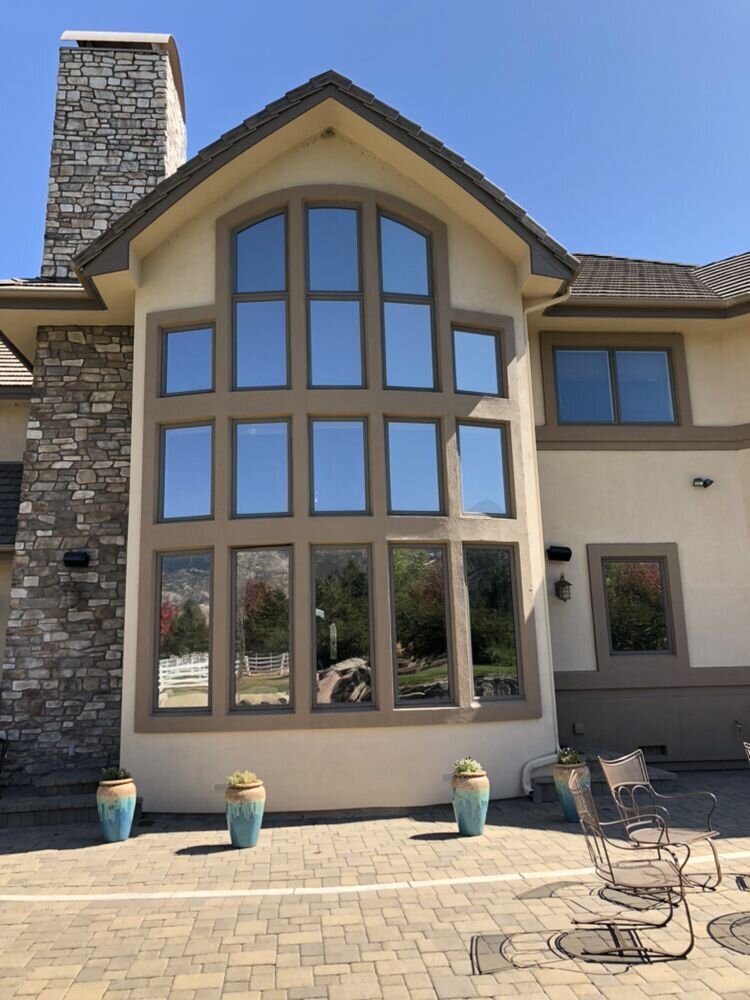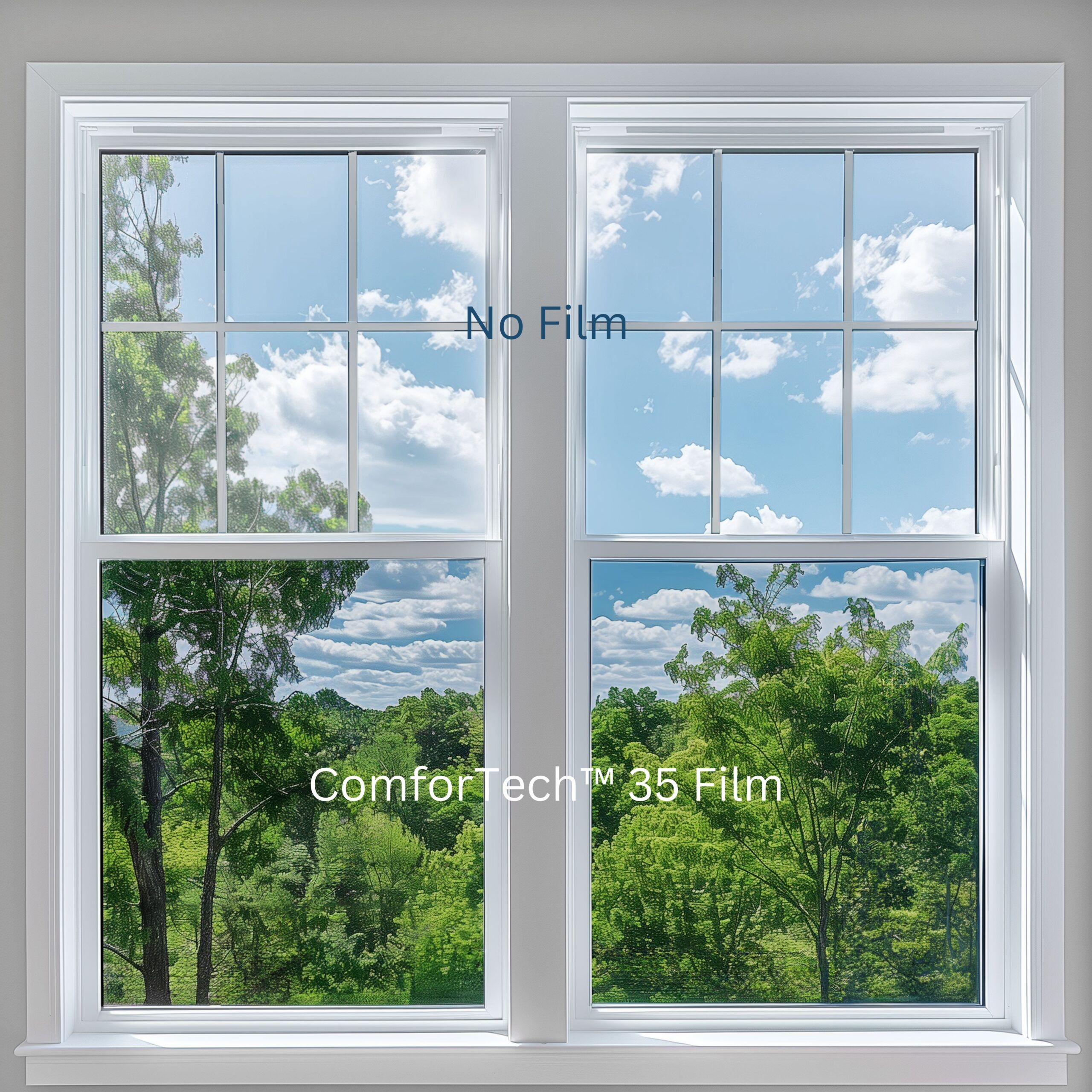Residential Window Tint: An Overview to Picking the Right Shade
Residential Window Tint: An Overview to Picking the Right Shade
Blog Article
How Residential Home Window Tinting Enhances Your Home's Power Effectiveness
Residential window tinting offers a compelling remedy for house owners seeking to improve energy performance within their space. By using specialized films to home windows, it successfully reduces warmth transfer, thus maintaining indoor temperature levels and lessening the need for too much home heating or cooling. This not just curtails energy intake but likewise gives a more comfortable environment by minimizing glow. Comprehending the subtleties of how tinting works and picking the appropriate type for your home can be essential. Curiously, what elements should one take into consideration before making this investment?
Understanding Home Window Tinting
Comprehending window tinting is important for house owners seeking to improve both convenience and power performance in their living areas. Residential Window Tint. Home window tinting involves the application of a thin movie to the interior or outside surface area of glass windows. This movie can significantly modulate the amount of sunlight and heat that enters a home, hence affecting interior environment problems
There are different types of window tinting films available, each with distinct properties. As an example, colored movies soak up solar power, while reflective movies disperse it away from the glass surface area. Ceramic films supply an equilibrium of presence and warmth being rejected, making them a prominent choice among homeowners. The effectiveness of home window tinting is usually gauged by its Visible Light Transmission (VLT) portion, which suggests how much light can travel through the movie.
Benefits of Power Effectiveness
Home window tinting not only enhances looks however additionally plays a substantial function in improving power effectiveness within domestic rooms. By minimizing heat transfer via windows, colored films develop a much more stable interior climate, which can bring about considerable reductions in power consumption for heating & cooling. This power effectiveness converts into reduced utility expenses, giving house owners with considerable long-term cost savings.

Furthermore, window tinting enhances the convenience of living areas. By reducing glare and obstructing unsafe UV rays, colored windows create an even more pleasurable atmosphere, which can lead to boosted health for passengers. The protection versus UV rays additionally assists preserve furnishings and floor covering from fading, contributing to the long life of family items.
Just How Tinting Works
Tinting films run through a mix of sophisticated materials and modern technologies created to control the quantity of solar power getting in a home. Mostly composed of polyester, these movies typically incorporate ceramic or metal fragments that take in and reflect warm. This dual ability permits them to substantially reduce the infiltration of ultraviolet (UV) rays and infrared radiation while permitting visible light to travel through.
The efficiency of home window tinting is measured by its solar warm gain coefficient (SHGC), which shows how much solar power is transmitted with the home window. Reduced SHGC values are preferable as they signify higher warmth rejection. In addition, home window tints can include a selection of shades, enabling home owners to customize their aesthetic preferences while enhancing power efficiency.
Furthermore, these films function as an obstacle, avoiding warm loss throughout cooler months by reflecting interior warmth back into the home. This thermal insulation effect matches the air conditioning advantages obtained throughout warmer months, adding Find Out More to a well balanced interior environment year-round. By taking care of solar power effectively, domestic home window tinting not just improves comfort try this site but likewise plays a vital role in decreasing energy usage and reducing utility bills.
Choosing the Right Tint

There are different kinds of home window movies offered, including dyed, metalized, and ceramic. Ceramic movies give excellent warm control without endangering visibility and are highly long lasting, making them a preferred selection.
Noticeable light transmission (VLT) is an additional essential aspect, as it shows the quantity of all-natural light that can pass via the colored glass. Property owners ought to choose a color with a VLT that matches their lights preferences while still offering sufficient glare reduction.
Furthermore, examining the solar heat gain coefficient (SHGC) can help identify how well a tint can block heat from sunlight. A reduced SHGC suggests much better warm control, eventually improving energy effectiveness.
Installation and Upkeep Tips
Appropriate installation and upkeep are important parts in making best use of the have a peek at this website benefits of residential home window tinting. Specialists also utilize specialized strategies and tools, which can boost the sturdiness and effectiveness of the tint.
Complying with installment, upkeep is important to extend the life of the home window film. It is suggested to wait at the very least 30 days prior to cleaning the tinted home windows to permit the adhesive to treat totally.
Additionally, routine examinations are useful. Look for any peeling or bubbling, which might show inappropriate installation or wear gradually - Residential Window Tint. Attending to these concerns without delay can prevent further damage and preserve energy effectiveness. By sticking to these installment and upkeep tips, property owners can ensure their window tinting continues to offer considerable power cost savings and convenience for many years ahead.
Conclusion
In verdict, property home window tinting serves as a reliable option for enhancing power effectiveness within homes. By reducing warm transfer and blocking unsafe UV rays, window movies add to lower power consumption and enhanced interior comfort.
Home window tinting involves the application of a thin movie to the inside or exterior surface of glass home windows. By reducing warm transfer via home windows, tinted movies develop a more steady interior environment, which can lead to significant reductions in power intake for heating and cooling.The efficiency of home window tinting is gauged by its solar heat gain coefficient (SHGC), which shows how much solar energy is transferred via the home window. By managing solar energy effectively, property home window tinting not just boosts comfort but likewise plays a crucial duty in reducing energy consumption and lowering utility expenses.
By minimizing warm transfer and obstructing harmful UV rays, window films add to decrease power intake and boosted interior convenience.
Report this page